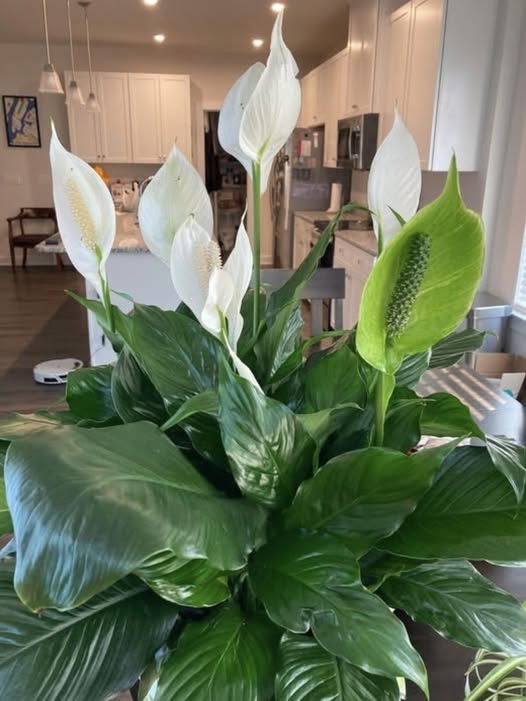hy Peace Lilies Stop Flowering (And How to Fix It)
Peace lilies (Spathiphyllum) are tropical plants native to the rainforests of the Americas. In the wild, they grow under the canopy — in dappled light, high humidity, and warm temperatures.
When we bring them home, we often get two things wrong:
Too little light → no energy to bloom
Inconsistent watering → stress that halts flowering
But with a few simple tweaks, you can turn your peace lily into a blooming machine.
🌞 1. Light: The #1 Key to More Flowers
Myth: “Peace lilies love low light.”
Truth: They survive in low light — but they bloom best in bright, indirect light.
✅ What They Need:
Bright, indirect light — near an east or north-facing window
Filtered sunlight — through a sheer curtain
No direct sun — it burns the leaves
💡 Signs of good light:
New leaves grow quickly
Leaves are deep green (not pale)
Buds appear regularly
🚫 Too dark? The plant stays green but never flowers.
✅ Fix: Move it closer to a window — but not in direct sun.
💧 2. Watering: Consistency Is Everything
Peace lilies are famous for drooping dramatically when thirsty — then perking up within hours of watering.
But too much drama stresses the plant and stops blooming.
✅ How to Water Right:
Check the top inch of soil — if dry, it’s time to water
Water thoroughly — until water runs out the drainage holes
Let excess water drain — never let the pot sit in water
Use room-temperature water — cold shocks the roots
💡 Pro Tip: If your tap water is high in fluoride or chlorine, use filtered or distilled water — peace lilies are sensitive.
🌡️ 3. Temperature & Humidity: Recreate the Rainforest
Peace lilies are tropical. They thrive in warm, humid air — not dry, drafty rooms.
✅ Ideal Conditions:
Temperature
se next page
ADVERTISEMENT

